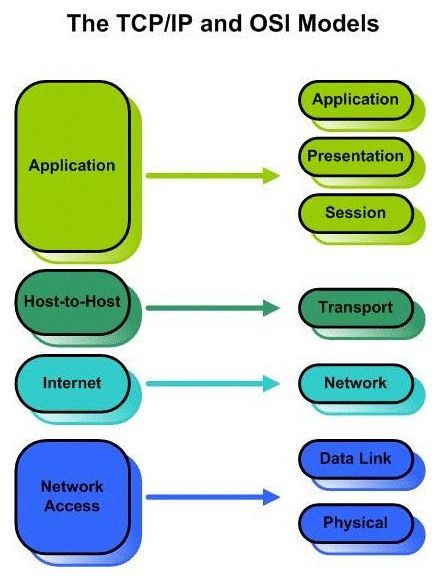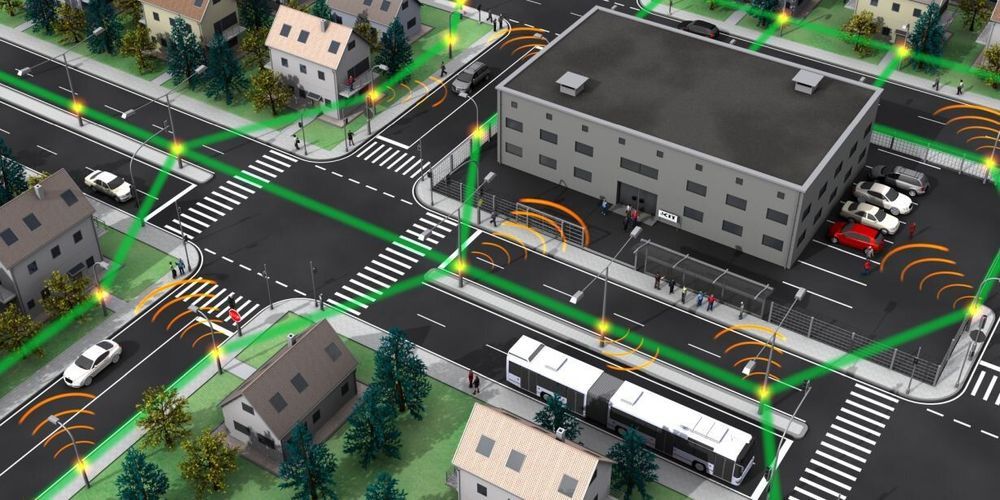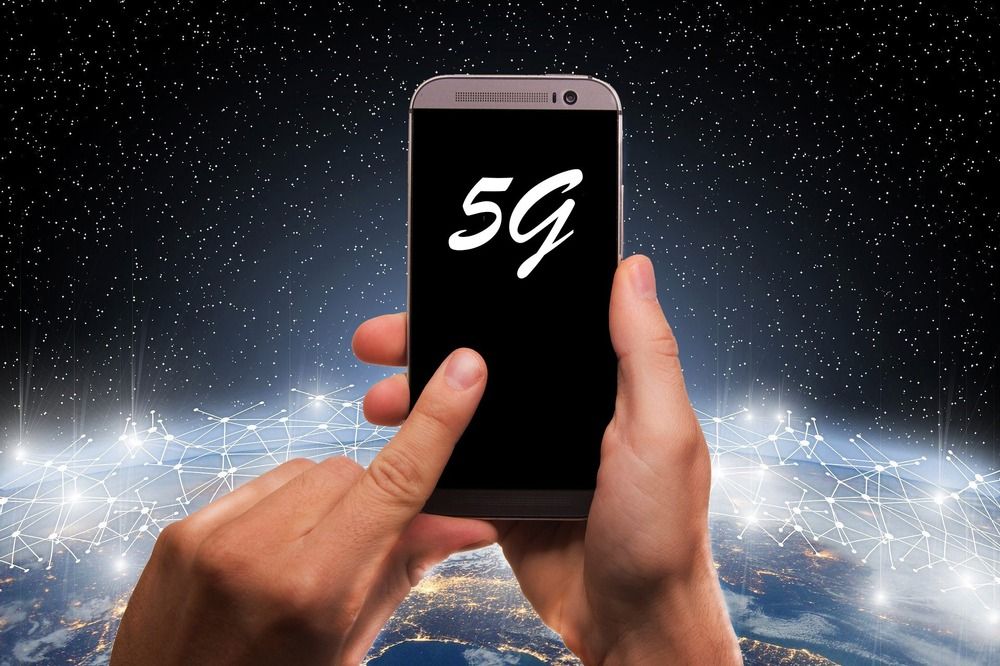The future of enterprise tech won’t be confined to the data center mothership — nor even the public cloud. Wedded to the internet of things, edge computing puts processing horsepower wherever it needs to go.



The company disclosed the benchmarks in a presentation to the FCC.

With thousands of students using the internet to attend class remotely, cybersecurity experts are raising concerns about children becoming targets for hackers. Many Central New York school districts, like the Central Square Central School District, sent laptops home with students. Central Square uses a software called GoGuardian that flags unsafe or inappropriate online material. Superintendent Thomas Colabufo says parents are happy to know that the security feature is in place.

My latest publication in Satellite Markets and Research, with significant contribution of Ms. Zoe Shahid.
by Muhammad Furqan and Zoe Shahid
Brisbane, Australia, September 4, 2020 —Exponentially increasing numbers of announced ambitious NGSO (Non-Geo Stationary Orbit) or LEO-HTS (Lower Earth Orbit – High Throughput Satellites) Mega Constellations have been creating waves in the world of technology. Their success will not be a mere disruption to the existing system, it will be a whole new system altogether.
With regular revisions in numbers of satellites from existing players and entrance of new players, these mega constellations will redefine the dynamics of Space Race 2.0, Industry 4.0, 4th, and 5th Dimension Warfare. With the rollout of a complete extra-terrestrial network there will be multiple challenges faced by the new ecosystem. With multiple revisions of filings with FCC (Federal Communication Commission) OneWeb (Qualcomm, Virgin, Airbus) leads the race with 48,000 satellites followed StarLink of SpaceX with 42,000 and Project Kuiper of Amazon with 3300 (1st numbers, may revise with the trend of the competitors) odd and other multiple constellations of smaller numbers. Recently, Huawei also announced its arrival with China Unicom with numbers of satellites not yet publicly announced. Security Challenges.

Future wireless networks of the 6th generation (6G) will consist of a multitude of small radio cells that need to be connected by broadband communication links. In this context, wireless transmission at THz frequencies represents a particularly attractive and flexible solution. Researchers at Karlsruhe Institute of Technology (KIT) have now developed a novel concept for low-cost terahertz receivers that consist of a single diode in combination with a dedicated signal processing technique. In a proof-of-concept experiment, the team demonstrated transmission at a data rate of 115 Gbit/s and a carrier frequency of 0.3 THz over a distance of 110 meters. The results are reported in Nature Photonics.
5G will be followed by 6G: The sixth generation of mobile communications promises even higher data rates, shorter latency, and strongly increased densities of terminal devices, while exploiting Artificial Intelligence (AI) to control devices or autonomous vehicles in the Internet-of-Things era. “To simultaneously serve as many users as possible and to transmit data at utmost speed, future wireless networks will consist of a large number of small radio cells,” explains Professor Christian Koos, who works on 6G technologies at KIT together with his colleague Professor Sebastian Randel. In these radio cells, distances are short such that high data rates can be transmitted with minimum energy consumption and low electromagnetic immission. The associated base stations will be compact and can easily be mounted to building facades or street lights.
To form a powerful and flexible network, these base stations need to be connected by high-speed wireless links that offer data rates of tens or even hundreds of gigabits per second (Gbit/s). This may be accomplished by terahertz carrier waves, which occupy the frequency range between microwaves and infrared light waves. However, terahertz receivers are still rather complex and expensive and often represent the bandwidht bottleneck of the entire link. In cooperation with Virginia Diodes (VDI) in Charlottesville, U.S., researchers of KIT’s Institute of Photonics and Quantum Electronics (IPQ), Institute of Microstructure Technology (IMT), and Institute for Beam Physics and Technology (IBPT) have now demonstrated a particularly simple inexpensive receiver for terahertz signals. The concept is presented in Nature Photonics.

How does #Taiwan connect with the #future through #5G?
https://bit.ly/33b4gmP from Neurozo Innovation
2020 is an epoch-making year of 5G technology for many countries, and Taiwan, too, has shown great enthusiasm for participating in this game. In this article, we will be introducing the 5G strategies and developments in Taiwan.
#technology #telecoms #telecommunications #innovation

The concept of quantum communication, with security guaranteed by the laws of physics, took the worl.
If you do not yet have an account, please register so you can.


The emergence of artificial intelligence and machine learning techniques is changing the world dramatically with novel applications such as internet of things, autonomous vehicles, real-time imaging processing and big data analytics in healthcare. In 2020, the global data volume is estimated to reach 44 Zettabytes, and it will continue to grow beyond the current capacity of computing and storage devices. At the same time, the related electricity consumption will increase 15 times by 2030, swallowing 8% of the global energy demand. Therefore, reducing energy consumption and increasing speed of information storage technology is in urgent need.
Berkeley researchers led by HKU President Professor Xiang Zhang when he was in Berkeley, in collaboration with Professor Aaron Lindenberg’s team at Stanford University, invented a new data storage method: They make odd numbered layers slide relative to even-number layers in tungsten ditelluride, which is only 3nm thick. The arrangement of these atomic layers represents 0 and 1 for data storage. These researchers creatively make use of quantum geometry: Berry curvature, to read information out. Therefore, this material platform works ideally for memory, with independent ‘write’ and ‘read’ operation. The energy consumption using this novel data storage method can be over 100 times less than the traditional method.
This work is a conceptual innovation for non-volatile storage types and can potentially bring technological revolution. For the first time, the researchers prove that two-dimensional semi-metals, going beyond traditional silicon material, can be used for information storage and reading. This work was published in the latest issue of the journal Nature Physics[1]. Compared with the existing non-volatile (NVW) memory, this new material platform is expected to increase storage speed by two orders and decrease energy cost by three orders, and it can greatly facilitate the realization of emerging in-memory computing and neural network computing.
